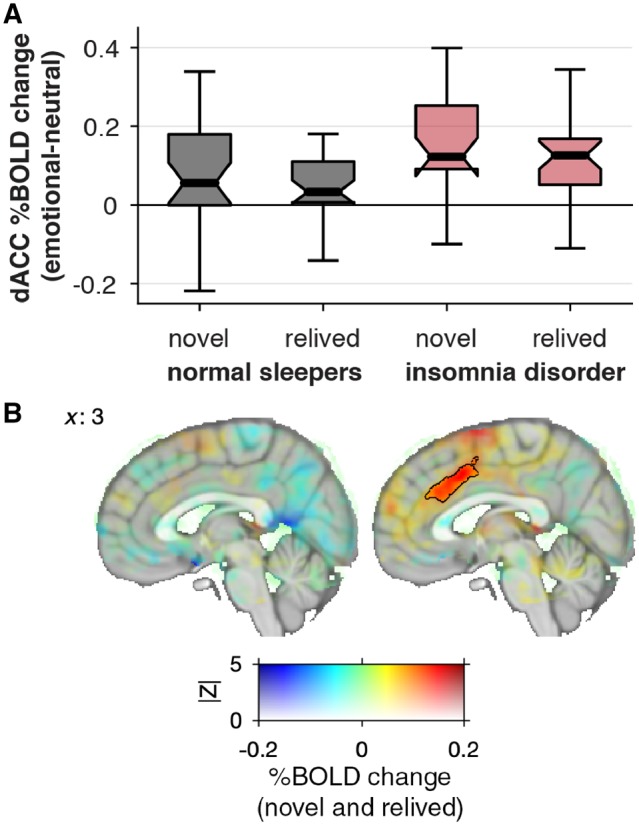Figure 3.

The dorsal ACC responds to both novel and relived self-conscious emotions in patients with insomnia disorder but not in normal sleepers. (A) Boxplots: thick lines indicate the median per cent BOLD change within the dorsal ACC (significant cluster found in insomnia disorder, black outline in B). The box extends from the 25th to the 75th percentile and whiskers extend to the most extreme data point within the range of the box ± 1.5 × IQR. (B) The mean emotion-specific BOLD response to relived and novel experiences is coded by hue (emotional–neutral contrast). The voxel’s Z-statistic for conjunction is coded with opacity (between 0 < |Z| < 5; see ‘Materials and methods’ section). The significantly overlapping cluster (|Z| > 3.10 and P < 0.05) in the dorsal ACC is indicated with black outline; one other cluster was found in the right supramarginal gyrus (not shown; see ‘Results’ section).
